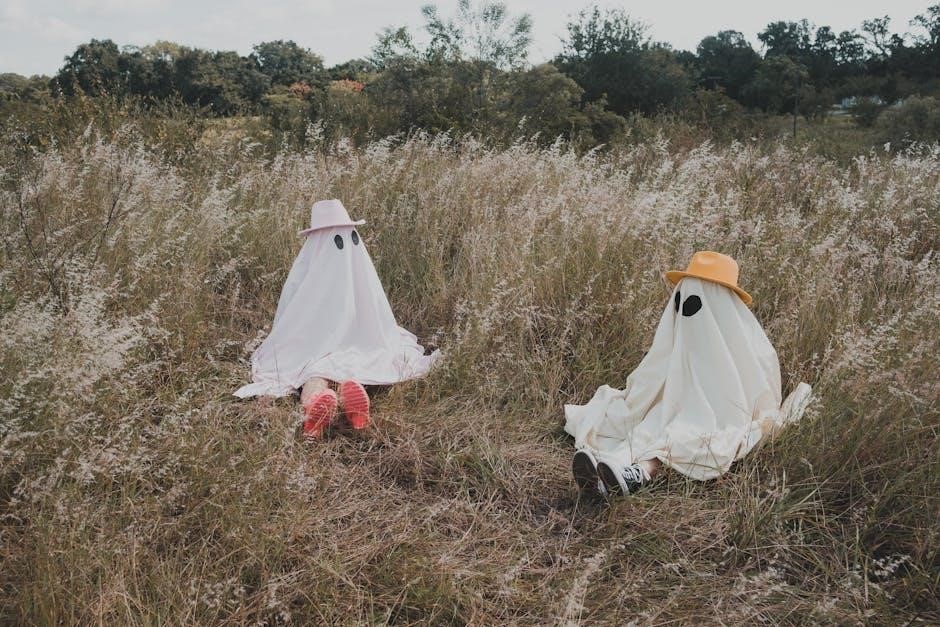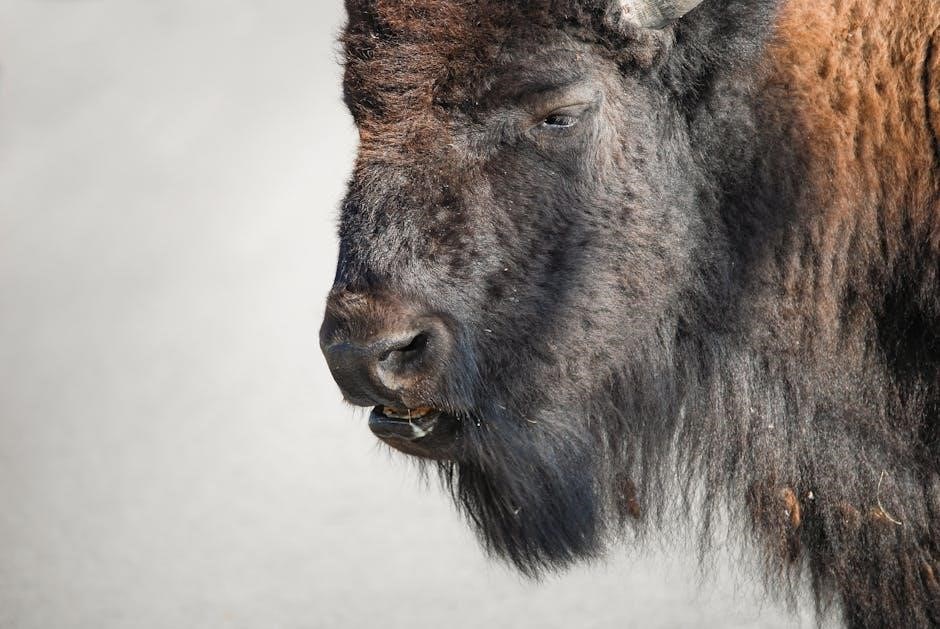
The Audubon Society Field Guide to North American Mushrooms is an essential resource for enthusiasts and researchers, featuring over 700 species and 900 photographs. Renowned mycologist Gary H. Lincoff’s expertise ensures accurate identification, making it indispensable for both beginners and scientists.
Overview of the Guide
The Audubon Society Field Guide to North American Mushrooms is a comprehensive resource for identifying and understanding mushrooms across North America. It features over 700 full-color photographs, organized by color and shape for easy visual identification. With durable vinyl binding, it is designed for portability and field use. The guide covers a wide range of species, providing detailed descriptions of habitats, characteristics, and spore prints. Updated with the latest scientific advancements, it is a trusted tool for both enthusiasts and experts, making it an indispensable companion for mushroom exploration and study.
Importance of Mushroom Identification
Accurate mushroom identification is crucial for safety, ecological understanding, and scientific research. Misidentification can lead to serious health risks, as some species are poisonous. The guide helps distinguish edible from inedible mushrooms, ensuring safe foraging. It also aids in understanding fungal roles in ecosystems, promoting conservation and biodiversity. By providing detailed information, the guide supports both amateur enthusiasts and professionals in advancing mycological knowledge and appreciation for these vital organisms.
Key Features of the Audubon Society Field Guide
The guide features durable vinyl binding, over 700 full-color photos, comprehensive coverage of North American mushrooms, and updated classifications reflecting climate change impacts.
Durable Vinyl Binding and Portability
The Audubon Society Field Guide features a durable vinyl binding, designed to withstand the rigors of outdoor use. This sturdy construction ensures the guide remains intact even when carried in challenging field conditions. Its compact size and lightweight design make it highly portable, allowing enthusiasts to easily slip it into a day pack or bag for quick reference during mushroom hunting excursions.
This practical design emphasizes accessibility and longevity, ensuring the guide remains a reliable companion for mycologists and nature lovers alike. Its portability is a key feature, tailored for fieldwork and exploration.
700 Full-Color Identification Photographs
The guide includes over 700 full-color identification photographs, capturing mushrooms in their natural habitats. These high-quality images are essential for accurate species recognition, showcasing key features like cap shape, gill color, and stem details. Organized by color and shape, the photographs simplify visual identification, making it easier for users to narrow down species quickly. Each image is crisp and detailed, ensuring that even subtle characteristics are visible for precise mushroom identification in the field or at home.
Organization by Color and Shape
The guide organizes mushrooms by color and shape, simplifying identification. This intuitive system groups species with similar visual characteristics, allowing users to quickly narrow down possibilities. Beginners and experts alike benefit from this approach, which complements the detailed descriptions and photographs. By focusing on observable traits, the guide ensures a user-friendly experience, making it easier to identify mushrooms accurately in the field or at home.
Comprehensive Coverage of North American Mushrooms

The guide provides an extensive overview of North American mushrooms, covering over 700 species with detailed descriptions and high-quality photographs. It includes both common and lesser-known varieties, ensuring a broad representation of fungal diversity. The comprehensive approach makes it an indispensable resource for enthusiasts and experts, offering insights into habitats, characteristics, and ecological roles. Updated to reflect modern taxonomy and environmental impacts, the guide remains a cornerstone for understanding North America’s rich mycological landscape.
Structure and Organization of the Guide
The guide is structured for easy navigation, featuring a visual identification system organized by color and shape, with detailed descriptions for accurate mushroom identification.
Visual Identification System
The guide employs a visual identification system, organizing mushrooms by color and shape for quick reference. Users can easily narrow down species by appearance, enhancing accuracy for both novices and experts. This method ensures efficient and reliable identification, making it an invaluable tool for field mycology.
Detailed Descriptions of Mushroom Habitat and Characteristics
The guide provides detailed descriptions of each mushroom’s habitat and characteristics, including size, shape, color, and growth patterns. This information helps users understand the environments where species thrive, from forests to grasslands. Descriptions also cover unique physical traits, such as gills, pores, or stems, aiding in accurate identification. These details complement the visual system, ensuring a comprehensive understanding of each species and their ecological roles.
Guide to Mushroom Features and Spore Prints
The guide includes a comprehensive section on mushroom features and spore prints, essential for accurate identification. Detailed explanations of cap shapes, gill structures, and stem characteristics are provided. Spore prints are highlighted as a critical tool for distinguishing species, with instructions on how to create and analyze them. High-quality images and descriptive text help users interpret these features, ensuring precise identification and enhancing the understanding of fungal morphology and diversity. This section is vital for both novice and experienced mycologists.

Author Expertise and Contributions
Gary H. Lincoff, a distinguished mycologist and instructor at the New York Botanical Garden, brings decades of expertise to the guide, ensuring its scientific accuracy and educational value.
Gary H. Lincoff: Renowned Mycologist and Author
Gary H. Lincoff, a distinguished mycologist and instructor at the New York Botanical Garden, is the mastermind behind the Audubon Society Field Guide. His extensive knowledge of North American fungi, combined with decades of research and teaching, has made the guide a trusted resource. Lincoff’s expertise ensures the guide’s scientific accuracy and accessibility, catering to both enthusiasts and experts. His contributions to mycology education and conservation are unparalleled, making the guide indispensable for anyone exploring the fascinating world of mushrooms.
Experience in Mushroom Research and Education
Gary H. Lincoff’s extensive experience in mushroom research and education has significantly contributed to the field of mycology. As an instructor at the New York Botanical Garden, he has shared his knowledge with countless enthusiasts and scientists. His research focuses on North American fungi, emphasizing accurate identification and ecological understanding. Lincoff’s work bridges the gap between scientific rigor and accessible learning, making the Audubon guide a valuable resource for both beginners and advanced mycologists. His dedication to education and conservation has left a lasting impact on the study of mushrooms.
Scientific Approach and Updates
The guide incorporates cutting-edge research, including the impact of climate change on mushroom species and advancements in DNA sequencing, ensuring accurate and up-to-date classifications.
Impact of Climate Change on Mushroom Species
Climate change has significantly influenced mushroom habitats and distribution patterns across North America. The guide highlights how shifting temperatures and precipitation affect species diversity, with some mushrooms appearing earlier or in different regions. These changes alter ecological relationships, potentially threatening rare species. The updated guide reflects these environmental shifts, offering insights into how climate change reshapes fungal ecosystems and the importance of conservation efforts to protect these vital organisms.
Advancements in DNA Sequencing and Classification
Recent advancements in DNA sequencing have revolutionized the classification of North American mushrooms. The guide incorporates these discoveries, revealing new species relationships and reclassifications. Gary H. Lincoff’s expertise ensures the guide reflects the latest scientific understanding, providing precise identifications. With over 700 species documented, the text highlights how DNA sequencing has expanded knowledge of fungal diversity, offering a modern framework for mushroom study and identification.

Practical Use in the Field
The guide’s portable design and durable binding make it ideal for fieldwork. Its visual identification system and spore print guide ensure accurate and efficient mushroom identification.
Tips for Mushroom Hunting and Identification
The Audubon guide offers practical advice for mushroom enthusiasts. Observe the mushroom’s habitat, as species often thrive in specific environments. Use the visual identification system to match colors and shapes. Note distinctive features like gills, pores, or stems. Collect spore prints for further analysis. Be cautious with unknown species, as some are poisonous. Carry the guide for quick comparisons and avoid touching mushrooms to preserve their integrity for others. These tips enhance both safety and accuracy in the field.
Essential Tools for Field Mycology
Ease your mushroom-hunting experience with a few essential tools. A magnifying glass or hand lens helps examine tiny features. A sturdy knife or blade is useful for cutting specimens. Carry a collection basket or breathable bag to store finds. A notebook and pencil record observations. Wear gloves and protective clothing for safety. A field guide, like the Audubon Society’s, is indispensable for quick comparisons. These tools ensure accurate identification and responsible handling of mushrooms in their natural habitats, enhancing your mycological adventures.
Safety Precautions for Handling Mushrooms
When handling mushrooms, exercise extreme caution to avoid potential risks. Always wear gloves to prevent skin irritation. Avoid touching your face, especially your eyes or mouth, after handling specimens. Never taste or consume unknown mushrooms, as some are deadly poisonous. Use a knife or tool to minimize direct contact. Ensure proper ventilation when working with mushrooms indoors. Misidentification can be fatal, so consult experts or reliable field guides like the Audubon Society’s for accurate identification; Safety is paramount in field mycology.

Edible and Poisonous Mushrooms
The guide provides a clear classification of edible and poisonous mushrooms, emphasizing the importance of accurate identification to ensure safety and responsible foraging practices.
Classification of Edible and Inedible Species
The guide offers a detailed classification of edible and inedible mushrooms, providing clear visual distinctions and descriptions to aid in safe identification. High-quality images and expert insights help enthusiasts distinguish between species, ensuring responsible foraging and consumption. This section emphasizes the importance of accurate classification to avoid potential risks associated with poisonous varieties, while highlighting the culinary value of edible mushrooms. It serves as a trusted resource for both beginners and experienced mycologists.
High-Quality Images for Accurate Identification
The guide features 762 full-color photographs, showcasing mushrooms in their natural habitats with exceptional clarity. Organized by color and shape, these images facilitate quick and precise identification. Each photograph highlights key characteristics, such as cap texture, gill arrangement, and stem features, ensuring enthusiasts and experts can accurately distinguish species. The visual detail provided is unmatched, making this guide an invaluable tool for anyone seeking to identify North American mushrooms with confidence.

Impact and Reception
The guide is widely acclaimed for its comprehensive coverage and updated classifications, making it a trusted resource for both enthusiasts and experts in mycology and conservation efforts.
Role in Mycology and Conservation
The Audubon Society Field Guide plays a pivotal role in mycology by providing detailed classifications and updated species information, aiding researchers and conservationists. Its focus on habitat descriptions and ecological impacts highlights the importance of preserving fungal diversity. By educating enthusiasts and scientists alike, the guide supports efforts to protect mushrooms and their environments, making it a cornerstone for both mycological research and environmental conservation efforts across North America.
Popularity Among Enthusiasts and Experts
The Audubon Society Field Guide to North American Mushrooms is highly regarded by both amateur enthusiasts and professional mycologists. Its clear, visually oriented approach and comprehensive coverage make it accessible to newcomers while offering depth for experts. The guide’s portability and detailed photographs ensure its popularity in the field, while its scientific rigor solidifies its reputation as a trusted resource. It remains a favorite among nature lovers and researchers, bridging the gap between hobby and advanced mycological study.
The Audubon Society Field Guide to North American Mushrooms is an indispensable resource, offering comprehensive coverage and expert insights. Its detailed photographs and clear descriptions make it a must-have for enthusiasts and researchers alike, ensuring its enduring value in the field of mycology.
Final Thoughts on the Guide’s Value
The Audubon Society Field Guide to North American Mushrooms is an indispensable resource for both enthusiasts and experts. Its comprehensive coverage of over 700 species, paired with detailed descriptions and high-quality images, ensures accurate identification. Renowned mycologist Gary H. Lincoff’s expertise elevates the guide’s authority. It is a must-have for anyone exploring the fascinating world of fungi, offering unmatched depth and clarity. Its portability and durability make it a perfect companion for fieldwork, solidifying its value for years to come.

Recommendation for Mushroom Enthusiasts
The Audubon Society Field Guide to North American Mushrooms is a must-have for any fungi enthusiast. With its 700 full-color photographs and detailed descriptions, it simplifies identification for both beginners and experts. The guide’s portability and durable binding make it ideal for field use. Enthusiasts will appreciate its comprehensive coverage of over 700 species, ensuring a deeper understanding of North America’s diverse fungal landscape; It is an essential tool for anyone passionate about mycology and nature exploration.